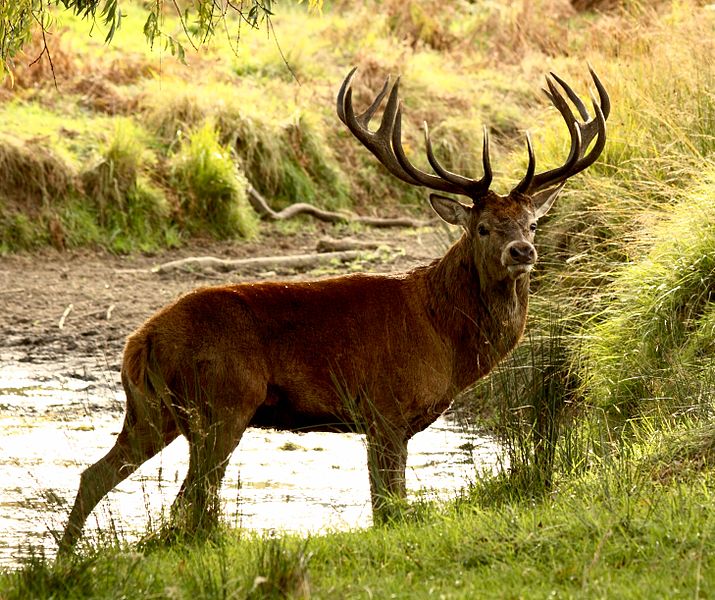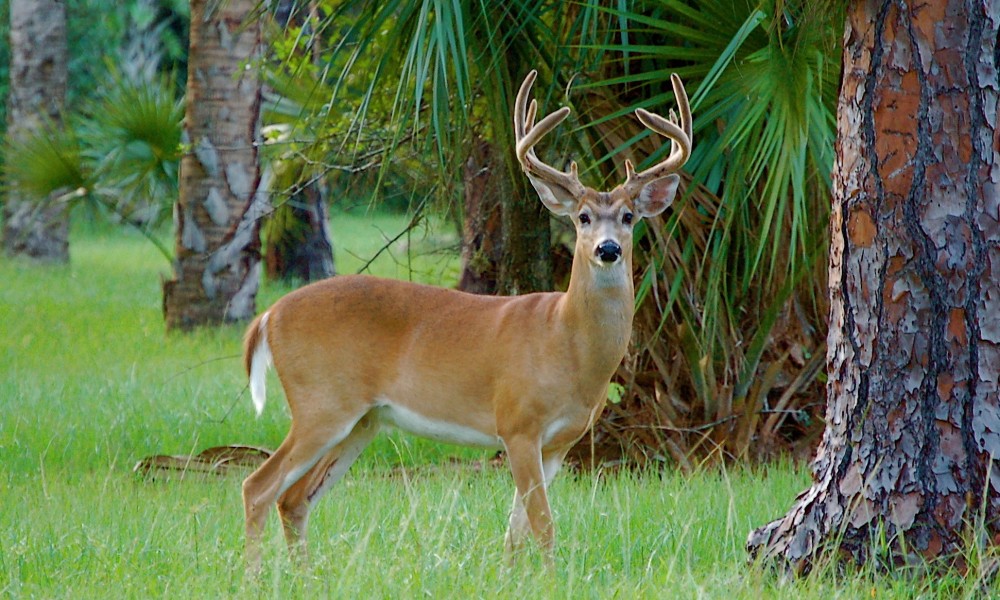Once hunting the deer,hunters should know their action and cloths can influent the deer. Hunters should wear the correct colored cloths. Besides, hunter should not wear the blue Jeans. Now let me tell you the reasons.
PHYSICAL TRAITS
If you have ever looked into the eyes of a live deer, you may have noticed that their eyes are shaped much differently than ours are. While a human has a round pupil, a deer’s pupil is shaped like a horizontal oval. This oval shape allows a deer to view a larger area to the left and right of it rather than what is above or below it. It is important to remember that a deer is a prey animal, hunted by other wildlife such as mountain lions, bears, and coyotes. Those predators are terrestrial like the deer, so the deer doesn’t naturally look up into the trees to detect danger.
Another physical trait associated with prey species is eye location on the head. While humans and other predators have forward-facing eyes, enabling us to focus on specific objects, deer eyes are located on the side of the head. This placement gives the deer a 310-degree arc of vision to more easily keep an eye out for predators.
LOW-LIGHT VISION 
When you’re driving at night with your headlights on, you may notice that a deer’s eyes glow when hit with your high beams. Referred to as “eye shine,” this is caused by a dense layer of fibrous tissue called the tapetum lucidum, found in the back of the eye. The purpose of this specialized tissue is to reflect visible light back through the eye so that it can be picked up by photoreceptors. In this way, it’s almost like deer have built-in night-vision goggles. Deer are able to amplify the limited amount of moonlight during the darkest night to identify and move about their surroundings. This ocular adaption is not limited to deer; the tapetum lucidum is found in a number of mammals that are active at night, including cats, dogs, and raccoons.
COLOR PERCEPTION
Lastly, very few animals share the same perception of colors. Some animals have been documented as seeing only in black and white, while others can perceive colors that we humans cannot. The ability to see colors is controlled by the rods, which register dim-light vision, and cones, which detect color via three primary wavelengths of blue, green, and red. Subtle differences in the cones can greatly impact what an individual can see, which is why some people may suffer from color-blindness. In the case of deer, their ability to see blue is more amplified than that of humans, their green vision is similar to ours, and they lack definition of reds.
For color, there’s no need to be concerned about wearing blaze orange because the deer won’t be able to zero in on it like a fellow hunter can. when it comes to their field of vision, a deer can see the majority of its surroundings, but with limited vision above or below. The wide placement of their eyes comes at a cost: they lack the high degree of acuity that is associated with periscopic vision. When dusk comes, deer have the advantage. They can see their surroundings much more clearly than we can, which explains how they can run through the woods at night but rarely ever trip over a log.
I hope these tips can help the deer hunters.Good Luck!
